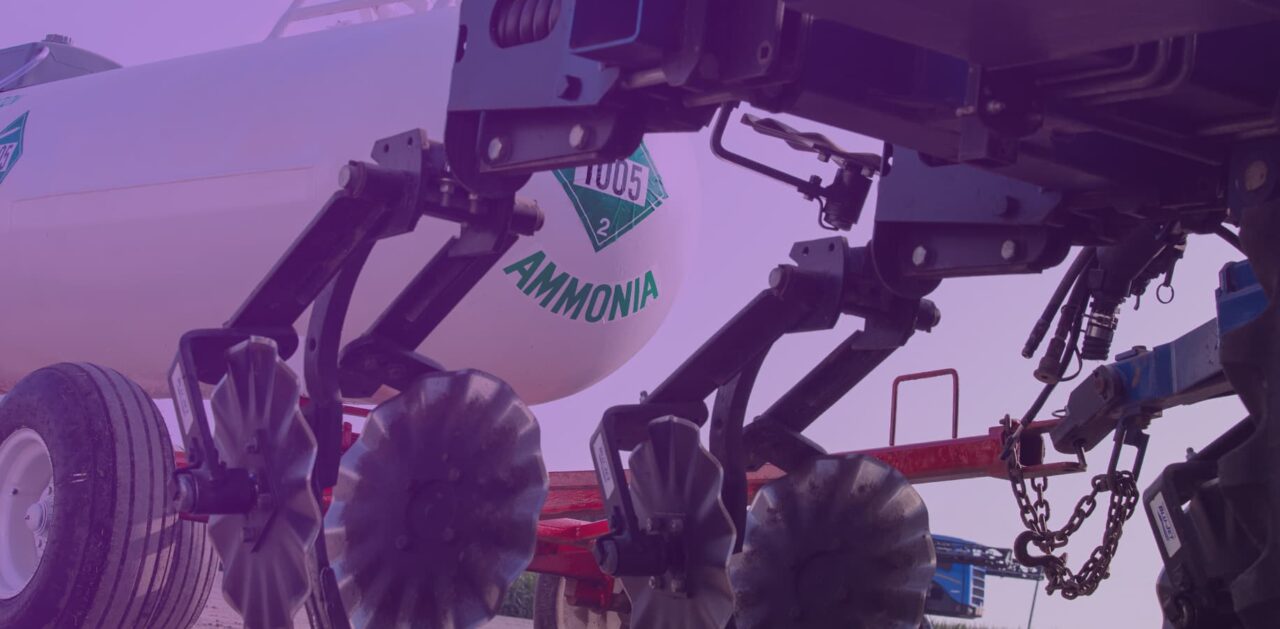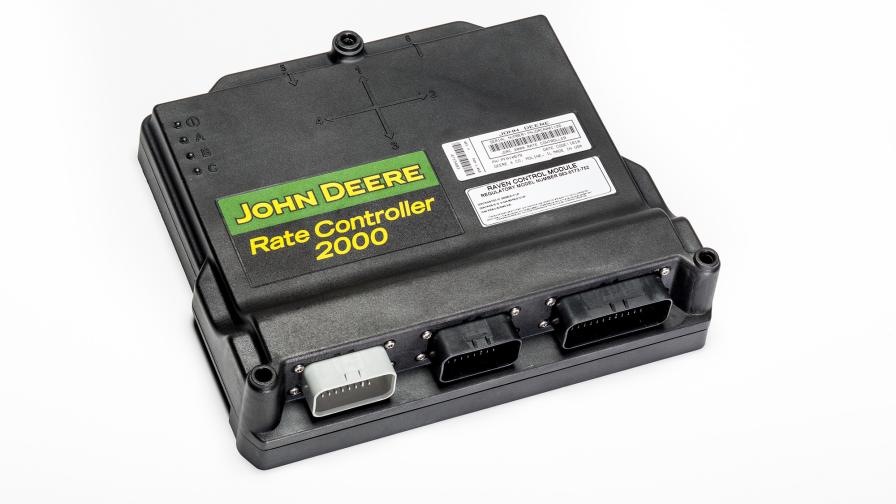Goal Remains Same for Makers of Rate Controllers — Improve Interconnectivity, Simplicity, and Accuracy
Chad Biegler, Product Manager with Raven Industries, concedes that it sounds repetitious. But when it comes to the current state of rate controllers, the biggest challenge remains interconnectivity and compatibility, he says.
“This may seem like a broken record; however, the importance of compatibility cannot be understated,” Biegler says.
Manufacturers of modern precision agricultural technology and machinery are mitigating that risk, Biegler says, by transitioning to ISOBUS and maintaining a transparency of functionalities in the Agricultural Industry Electronics Foundation (AEF) database.
Raven and AGCO, in an attempt to ensure a smooth data transfer process, have partnered to offer the Slingshot suite of services. Slingshot, according to AGCO Tactical Marketing Manager David Fickel, is the “most prolific, productive, and rugged transfer option in the industry” to address the issue of reliable remote data transfer.
“The process of consistent and reliable transfer of data to and from the controller is still the biggest hurdle today,” Fickel says. “There are specific times when the data transfer process becomes critical — for instance, when a prescription map is uploaded to the controller, when data is used as another layer to aid in decision processes, or when as-applied data is downloaded back to the office to drive billing. The fundamental ability to transfer data reliably allows the grower and retailer to take advantage of the agronomic research that goes into the input decisions.”
Other Issues to Consider
According to Mark Burns, Application Equipment Marketing Manager at Case IH, applicators are looking for display and rate control systems that give them complete machine control.
“Today’s operations demand a simple, intuitive interface for all vehicle and application functions that seamlessly interacts with all available precision technology,” Burns says. “It’s more important than ever for commercial operations to have the ability to wirelessly transfer jobs and completed work back for invoicing, as well as monitor machine performance and manage their fleets — all in one place. Plus, simple operation, set-up, and calibration help operators save time and get in the field faster.”
John Mishler, Precision Ag Tactical Marketing Manager for John Deere, says accuracy in application — ensuring that the right rate is applied in the right place while minimizing drift and the associated risk of off-target application — continues to be a “top-of-mind issue.”
Another issue, according to Tim Stuenkel, TeeJet Technologies’ Global Marketing Communications Manager, is the rate controller’s ability to control more boom sections. “In the past, booms were typically divided into sections based on the hinge points and had three to 10 sections,” Stuenkel says. “Now, new advances in individual nozzle shut-off paired with GNSS information are allowing for a greater number of boom sections and higher resolution automatic section control. Rate controllers must have the ability to support the greater number of sections now offered.”
Looking forward, says AGCO’s Fickel, rate controllers will continue to play a role in providing information to manage application systems and will continue to see advances.
“In the past, the operator visually managed the rate controller. We now have integrated systems that help support a better, more consistent application,” Fickel says. “A good example of this is auto-agitation, which provides correct product suspension and mixing while reducing the risk of pump shear impacting any adjuvants that might be included in the product mix. With the heightened risk of contamination and threats of drift at the forefront today, it’s a feature that warrants recognition.”
Although accuracy and confidence in precise on-target application remains a focus, according to Mishler, data is becoming an “even more important” factor. “The ability to record application information and conditions in a cloud-based solution, such as John Deere Operations Center, and provide the machine owner with tools that allow them to analyze and share that data with those that help them make decisions is becoming more and more critical,” he says.
“The agricultural sector is rapidly adopting some form of autonomous technology in all segments,” Biegler adds. “In order to support this rapid technology adaptation, rate controllers will require additional intelligence to automatically and methodically adapt to the field conditions, application specifications, and equipment performance. This will provide reassurance for accurate application control to support sprayer efficacy, no matter the level of human interaction.”
The remainder of this story focuses on the recent accomplishments and future aims of the five companies that responded to CropLife® magazine:
AGCO
• 2019 – The company continued this fall to enhance its partnership with Raven Industries to provide product support for the Raven Viper 4+ field computer. The collaboration gives AGCO customers a dedicated Raven support team and fully integrated systems to maximize their machines’ productivity all season long. AGCO’s RoGator and TerraGator application systems are fully compatible with the Viper 4+ field computer, which harnesses the power of Slingshot for data management functionality, wireless software updates for field computers, and increased efficiency with AgSync logistics.
• 2020 – The company enters the New Year positioned to offer the crop production industry both the LiquidLogic liquid application system and the AirMax R1/R2 pneumatic machine. “We’re confident that by focusing on technology, agronomic values, and productivity that we will help our customers improve their bottom lines and their ability to meet farmers’ agronomic needs. We are committed to offering the most crop-friendly, reliable, and durable products available on the market,” Fickel says.
Case IH
• 2020 – As customers stay focused on easy access to everything they want to control, Case IH will continue to provide that innovation, Burns says. “We are always working on the next solution that helps make our customers’ lives easier. Through our offerings, Case IH wants to provide operators with a complete application system that allows them to not only put product on the ground but also do it accurately — all from a single user interface,” he says. Customers in search of application equipment can choose from an AFS Pro 700 or Case IH Viper 4+ display depending on operator preference and what tasks are needed to perform on an operation.
John Deere
• 2019 – Although not specific to rate controllers, one of the enhancements that John Deere made earlier this year was to its Section Control product. The company improved diagnostic information and troubleshooting to make sure that rate controllers, among other controllers, were performing to their top capability, Mishler says.
• 2020 – The company will continue to focus on making rate controllers and Section Control more accurate by introducing new tools to better visualize on/off controls to fine-tune application, Mishler says. John Deere will continue to offer three separate rate controllers: GreenStar Rate Controller for single-product liquid or NH3, GreenStar Rate Controller Dry for single-product dry, and John Deere Rate Controller 2000, which provides control for up to five products in any combination of liquid, dry, or NH3.
Raven Industries
• 2019 – The company introduced a seed count and blockage module system that pairs with its Rate Control Module (RCM) for its use with on-air seeders primarily. Raven also introduced new functionality for use with manure spreaders, which dynamically changes the density factor based on user-entered values. The company also expanded globally, allowing for compatibility with additional machine and sensor configurations. RCM service and support are now offered in North America, Latin America, Eastern and Western Europe, and Australia, with plans to further expand in 2020, Biegler says.
• 2020 – Building upon its platform, the Raven Rate Control Module will continue to add additional features and platform capability. The company is also progressing toward AEF ISOBUS database certification, with a target of mid-2020. “As we continue to develop the RCM and move toward a complete ISOBUS system platform, our past rate controller products will continue to be transitioned to the RCM, furthering its position as the most versatile rate controller on the market,” Biegler says.
TeeJet Technologies
• 2019 – The company launched its new 845 rate control, which combines features of its previous 844E and 854 along with a new display screen and added features. “This is an entry-level, easy-to-use control system targeted at a variety of sprayers for both OEM and aftermarket sprayers,” Stuenkel says.
• 2020 – TeeJet will be releasing product control ECUs and rate controllers with larger boom section capability and the ability to interface with individual nozzle shutoff systems, according to Stuenkel.







